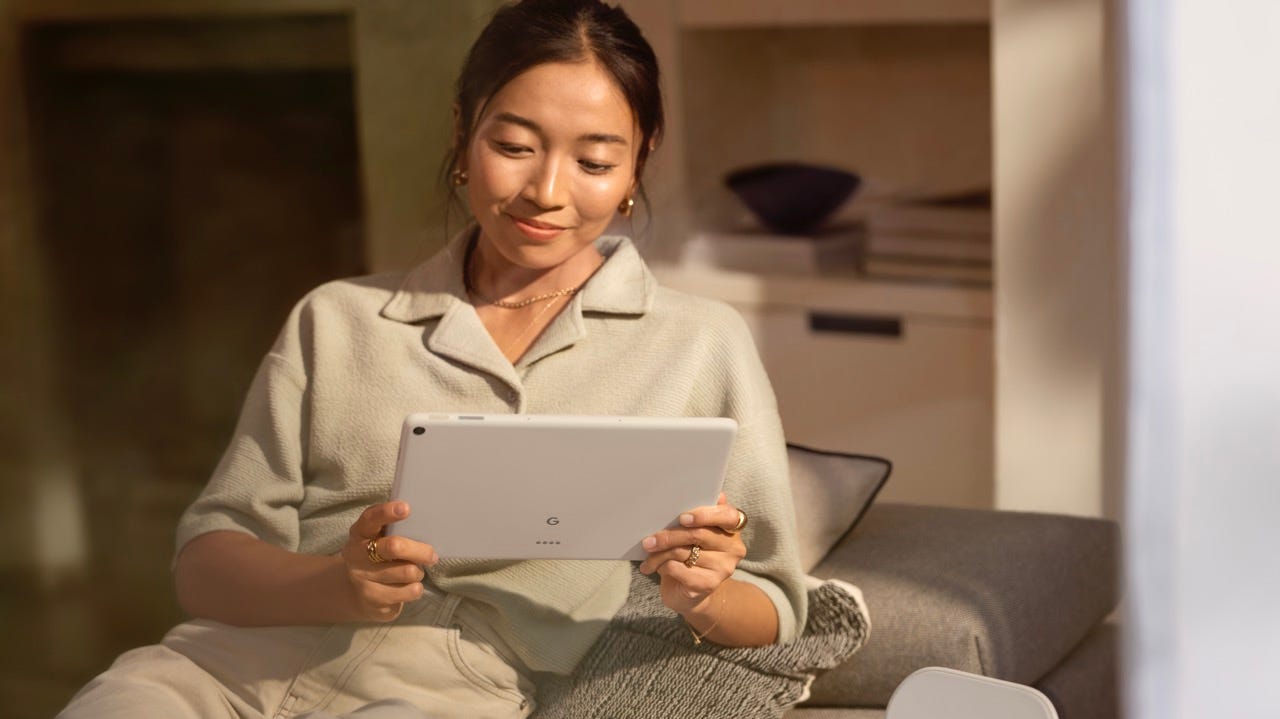
Google announced a ton of stuff this week. The main theme was new AI initiatives throughout its entire software and hardware lineup, including the just-announced Pixel 7a, Pixel Fold and Pixel Tablet.
Also: How to buy and pre-order all the new Pixel products
That last product, the Tablet, is Google’s attempt at making an Android tablet since the Pixel C was released in 2015 and is something I’ve thought a lot about over the last week.
In 2019, Google declared it was done experimenting with tablets and would instead focus on improving the touch experience of Chrome OS devices. And yet, here we are, four short years later, with the company announcing the $500 Pixel Tablet that you can pre-order right now, with deliveries starting June 20.
During the hardware portion of I/O’s opening keynote, Rose Yao, a vice president of product management at Google, took the stage to walk viewers through the Pixel Tablet. She demonstrated how typing with your voice was faster than typing on the Tablet’s software keyboard (no surprise there), talked up the fact that the Speaker Charging Dock will keep the Tablet charged and ready for use, and also showed off the Tablet’s smart hub features when it’s docked.
All of that was interesting, but also… confusing. Why did Google release a $500 smart display? Or is it a $500 tablet? It’s hard to tell by how much the announcement and all of the marketing materials are leaning into the smart display aspect of the Tablet.
A lot of people, myself included, use tablets as makeshift laptops for productivity. A dedicated keyboard case (bonus points if it has a trackpad) is table stakes for a tablet in 2023. People want to reply to emails, or maybe even get some work done in Google Docs, Sheets or Slides.
Also: Google announces the Pixel Tablet, and it’s not the iPad killer we hoped for
And yet, Google is firmly positioning the Pixel Tablet as an entertainment and home hub device; nothing more. I can buy a Nest Hub Max for $229. Heck, I could buy two of them, and still save some money compared to one Tablet, if all I really wanted was a smart display.
But I digress.
Hey Apple, you might want to pay close attention to this next part.
Near the end of Yao’s time on stage, she briefly mentioned a feature that made me sit up straight in my chair. She had my full attention. That feature? Multi-user support on a tablet.
The demonstration only took 17 seconds (yes, I counted) out of the 2-hour and 5-minute keynote. Here’s exactly what she said about the feature: “We know that tablets are often shared. So a tablet for home needs to support multiple users. Pixel Tablet makes switching between users super easy. So you get your own apps and your own content while maintaining your privacy.”
And here’s how it’ll work:
She’s right. Google’s right. Tablets are shared at home. And because of that, tablet users deserve multiuser support, a feature Apple’s iPad still doesn’t have, unless it’s used in an education or business setting. The feature’s called Shared iPad, and it allows students and colleagues to share tablets in a private way.
So multiuser support on the iPad is technically possible, but Apple has just purposely made the decision to keep it from the average consumer. And that’s a shame.
Also: Google Pixel Tablet vs. Apple iPad (2022)
I’ll, of course, have to use the Pixel Tablet’s multi-user support feature myself before declaring full victory for Google, but at least it’s trying. And it looks somewhat promising. Notice how in the GIF above, the wallpaper changes when the user changes? It’s a small detail but one that gives us a glimpse at the full customization of a tablet for each user. I’m here for it.
It’s crazy how a single feature immediately made the Pixel Tablet more appealing to me. Sharing a tablet with my wife and kids is something I’d love to do. And right now, it looks the only way to do that is to put my iPad down and pick up a Pixel Tablet.




















